Client
Draw spatial plans
Utilize data from GIS sources such as EMODnet or Copernicus to draw spatial plans to edit, remove, or add data on layers from varying human activities.
Collaborate with other players
Define and refine your spatial plans before implementing them.

Connect to a single sea basin wit up to 20 individual computers to collaborate
in the spatial development of your sea basin.
|
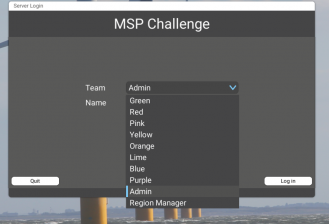
Players can select their team of choice, allowing multiple players to take control
and develop plans for a single country or region.
|
Implement (Collaborative) spatial plans
Besides or instead of existing plans and activities in the marine region.
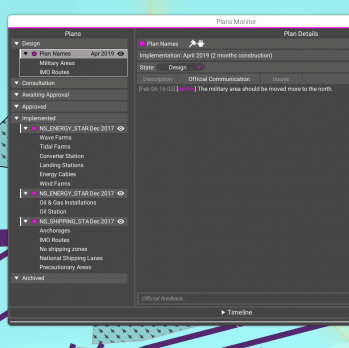
Players from multiple regions can simultaneously see each other's plans, comment on these plans, and when regional boundaries are crossed decide to approve or decline the implementation of these plans.
|
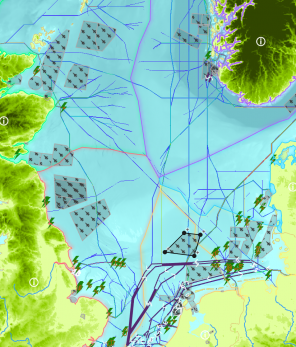
Plans impact cross-boundary shipping and ecology, capable of disrupting an entire sea basin. Players must communicate to keep their sea basin in optimal shape while communally improving on human activities.
|
Simulate effects of spatial plans
For the marine region's energy production capacity, ship traffic, and ecosystem dynamics.
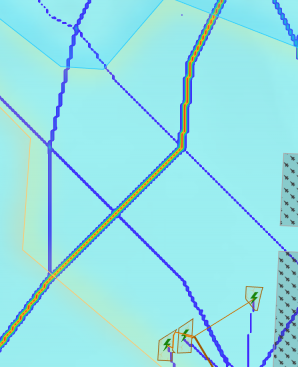
Three simulation platforms, calculating Ship Traffic, Energy Production Capacity, and Ecosystem Dynamics are connected to the sea basins, measuring cumulative impacts throughout the area. Models calculate the latest state every month of in-game time, creating a continuous simulation of the current state of the sea basin.
|
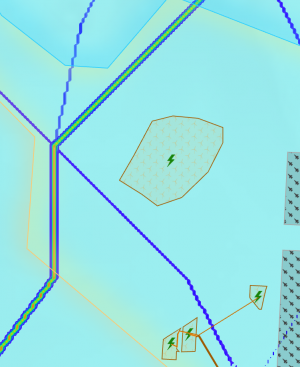
Plans developed and implemented by the users generate layer type dependent levels of impact on the simulation models. Every change matters and alters the state of the sea basin, be it on the ecology, ship intensity, or energy production.
|
Review & evaluate key objectives of targets
For the marine region with your spatial plans.
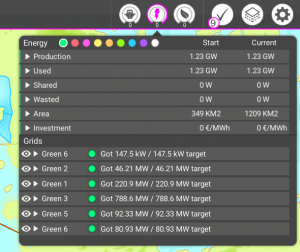
KPIs provide insight in the core values representing Shipping, Ecology, and Energy to gain insight in the constantly changing state of the sea basin.
|
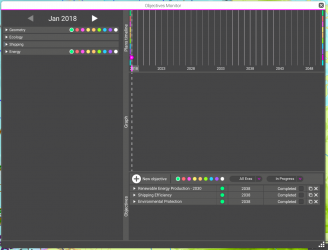
Use the objectives monitor to compare indicators with the plans created through the game session, and to view the objectives set for all teams in the game session.
|
Server / Administrator
Integrate and review dozens of data layers
From relevant external GIS sources such as EMODnet or Copernicus.
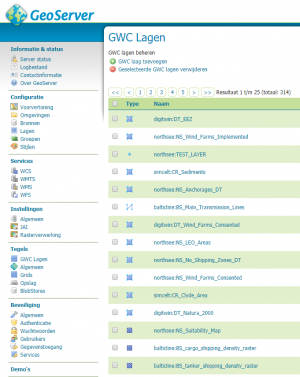
The MSP Challenge Simulation Platform utilizes a GeoServer to manage all GeoData retrieved from official GIS sources. The MSP Geoserver can be used, however, it is also possible to set up your own GeoServer for self-distributed data.
|
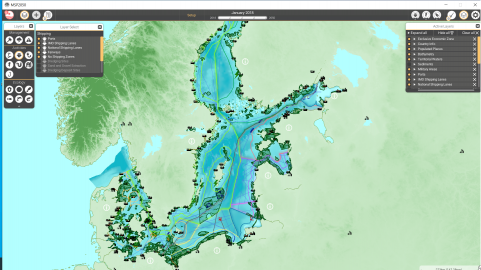
Data layers are the core content of the MSP Challenge Simulation Platform, allowing users to interact with the environment as desired. These layers can be controlled via configurations, and interacted with via the MSP Challenge Client.
|
Server manager
To add or remove sessions, simultaniously control and gain insight from multiple sessions and determine the duration of a session.
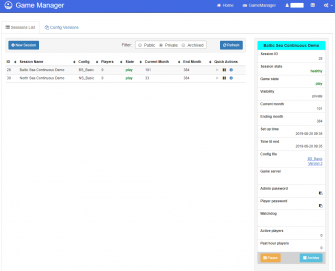
Use the server browser to view all active sessions. This contains up to date information about the gamestate, as well as info on the setup of the sessions. The server manager allows for multiple sessions to be active on a single server machine.
|
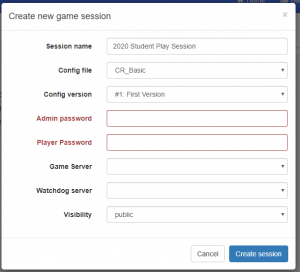
New sessions can be started via the session manager, allowing the game manager to select configurations to use, session names, passwords, and many other settings.
|
Configuration control
As configurations form the base of any session, these can be used to set rules, and manage layers used during the session.
| The config editor allows game managers to customize a pre-developed set of configurations to their own liking. Configurations determine amongst others the active layers, interactivity, visualizations, restrictions, and impacts on simulation models.
|
Via the server manager, multiple configuration files can be added and maintained, allowing game managers to run multiple sessions with varying configurations, updating the desired configuration with feedback from every session they manage.
|
To for in-depth information on these features, have a look at our video tutorials, or simply try out our online demo.












 Co-funded by the European Union.
Co-funded by the European Union.